Mimic Crescent (Phyciodes incognitus)
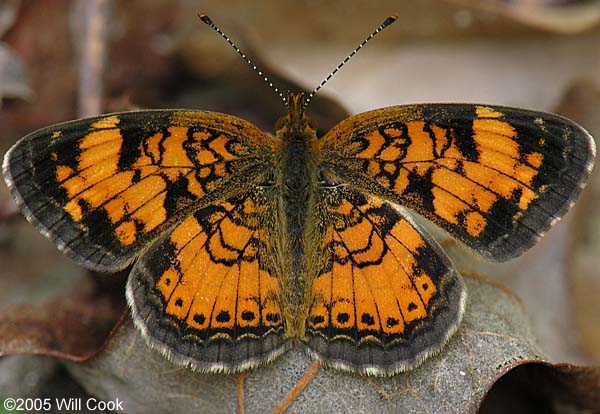
| Mimic Crescent is a recently described species that is easily overlooked because it's so similar to the common and widespread Pearl Crescent (P. tharos) and the Northern Crescent (P. cocyta) of the northern US/Canada. In fact, some authorities list this taxon as a subspecies of Northern Crescent, but I prefer to retain it as a separate species for now. It is dubbed "Mimic" because its appearance mimics the Northern Crescent, while the mitochondrial DNA is more similar to that of Pearl Crescent. It is difficult to tell from photographs, but Mimic Crescents on average are noticeably larger than Pearl Crescents and tend to have a stronger, higher flight. Tawny Crescent (P. batesii) is another possible confusion species, but has more black above. The range and abundance of this taxon has yet to be worked out. This individual was photographed at a known location for Mimic. Photo #1418. Male, Sally Gap Rd., Clay Co., NC 5/14/05. |
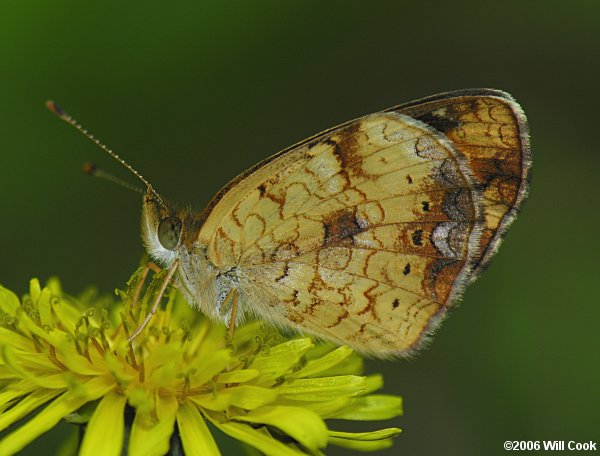
| Photo #6340. Males below are similar to Pearl Crescent, but have some white frosting and note that the undersides of the antennal clubs are orange. Male, Buck Creek, Clay Co., NC 5/12/06. |

| Photo #6247. Females below have a beautiful contasting pattern of white and dark brown on the VHW. Female, Buck Creek, Clay Co., NC 5/12/06. |
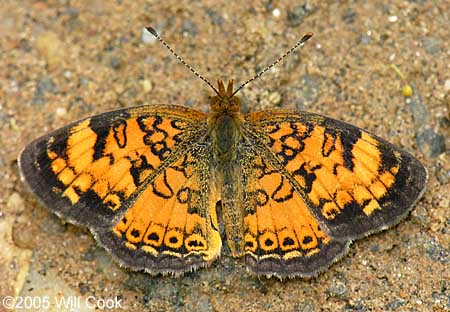
| Photo #1405. Another male. Ron Gatrelle, who described this new species, says this and the one at top are both classic male Mimics. Male Mimic Crescents have orange on the underside of the antennal clubs - this, the relatively large size, and the rich fulvous color help to identify them. Sally Gap Rd., Clay Co., NC 5/14/05. |

| Photo #1735. This is what #1405 above should look like with a bit of wear. Ron Gatrelle notes "these very fulvous Mimic males look most like Northern, but Northern occurs only in the summer and fall. Thus, if in the fall these types of males are could be either Mimic or Northern. In which case, the way to determine them is that on the underside Northern Crescent males are very pale and the outer VHW area is a very light brown patch." Worn male, Clay Co., NC 5/21/05. |
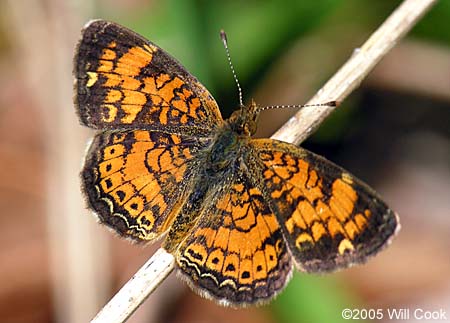
| Photo #1465. This is the darker form of the male Mimic Crescent, more similar to Pearl: the orange patch on the hindwing has the narrow black line all the way between the submarginal and median rows of tawny spots. Note how similar this is to the females 1409 and 1582 below. Buck Creek, Clay Co., NC 5/14/05. |

| Photo #1624. More from Ron: "On incognitus (esp. males), the veins of the HW tend to be orange not black through the median band of spots. In darker specimens, this is often limited to the middle vein that comes from the middle of the HW cell. In some more extreme fulvous specimens, like your 1405 male, this is true even on the forewings. These orange veins are rare in tharos." Male, Clay Co., NC 5/21/05. |
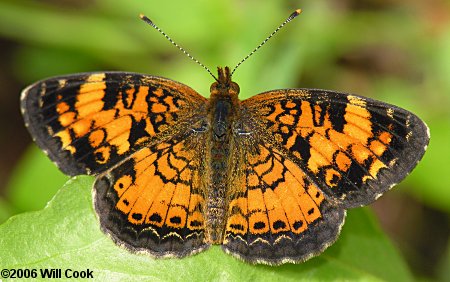
| Photo #1624. Male, Buck Creek, Clay Co., NC 5/12/06. |
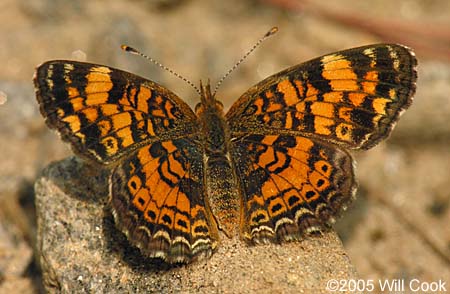
| Photo #1409. Female Mimic Crescent. Females are more difficult to separate. This female seemed large and flew like the male Mimic Crescents - a higher, stronger flight than typical Pearl Crescent. Note that the markings are similar to the males above - Ron Gatrelle says that one of the diagnostic features of the species is that males and females are usually marked much alike. Sally Gap Rd., Clay Co., NC 5/14/05. |
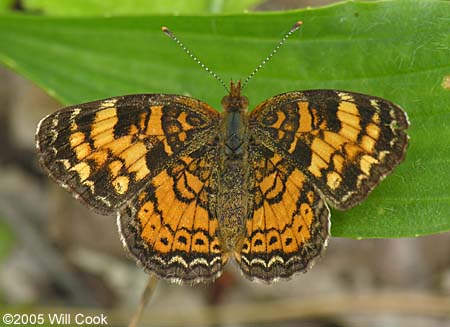
| Photo #1582. Female, Clay Co., NC 5/21/05. |
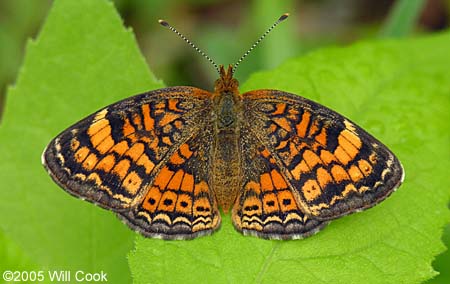
| Photo #1584. Female, Clay Co., NC 5/21/05. |
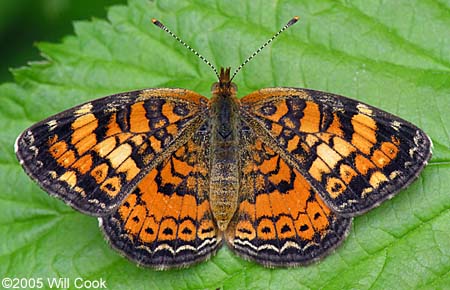
| Photo #1670. Female, Clay Co., NC 5/21/05. |
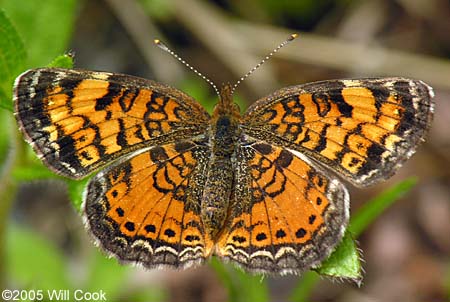
| Photo #1772. Female, Eagle Fork Rd., Clay Co., NC 5/22/05. |

| Photo #1805. Female, Eagle Fork Rd., Clay Co., NC 5/22/05. |

| Photo #1546. Male Pearl Crescent? Many Pearl/Mimic/Northerns cannot be positively identified. It does have seem to have a hint of orange on the antennal clubs, but I'm not sure if the underside of the clubs were orange (the key feature). This individual wasn't unusually large - I think this is a Pearl. Buck Creek, Clay Co., NC 5/14/05. |
Links to more information:
Here is the original paper describing this new species. Click on the title for the pdf file:
Gatrelle, RR. 2004. Description of a multilevel cryptic new species of Phyciodes (Nymphalidae: Melitaeinae) from the southern Appalachian Mountains. The Taxonomic Report of the International Lepidoptera Survey 4(8): 1-19.
And more information and photos from the TILS newsletter (pdf):
Gatrelle, RR. 2004. Phyciodes incognitus. The International Lepidoptera Survey Newsletter 4(1): 1-4.